"Short to the Ball" is Actually Long to the Ball
One reason why I (still) spend so much time collecting photos is because, on occasion, a picture will give me a flash of insight and sum up one or more of the concepts that I teach. The picture below of David Freese is just such a picture. It is a great example of the concepts of Rotation and Connection.[1] More importantly, it goes a long way toward explaining...
- Why the widely-described, supposedly short to the ball A to C Swing is actually quite long to the ball.
- Why you don't see the A to C Swing in good hitters.
The thing to notice in the picture below...
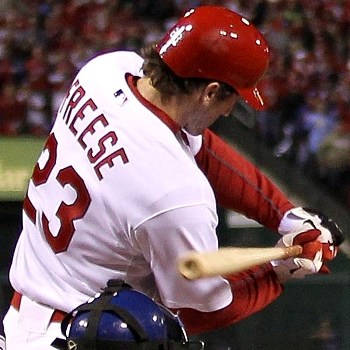
David Freese
Being Truly Short to the Ball
...is that, while David Freese's shoulders have rotated roughly 90 degrees, his hands have moved very little relative to his back shoulder; at most, David Freese's hands have moved a few inches. The adjusting that he has done has been accomplished by Tilting forward over the plate and not by dropping his hands.
You can see the same basic thing in this center field view of the same swing.
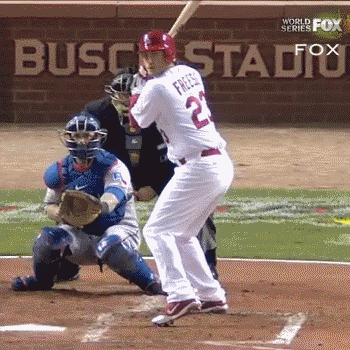
David Freese
Being Truly Short to the Ball
Notice how much David Freese's shoulders rotate before the barrel leaves the side of his back shoulder and his back elbow starts to extend. Also notice that, at the Point Of Contact, David Freese's hands are still up by his back shoulder and his back elbow is still quite flexed.
You can see the same thing in the clip below that shows David Freese hitting a double to the base of the wall in the gap in right center field.
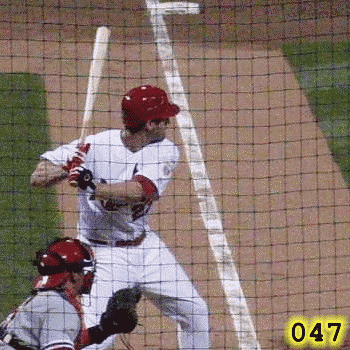
David Freese
Being Truly Short to the Ball
Notice how little David Freese' hands move relative to his back shoulder and how, at the Point Of Contact, his hands are up and in the plane of his shoulders and his back elbow is still bent roughly 90 degrees.
The Root Cause of the Problem
The problem is that many/most people don't know what a good position at the Point Of Contact actually looks like. They assume that it's what is shown in the picture below because that is what you see all over the internet and in most instructional videos.
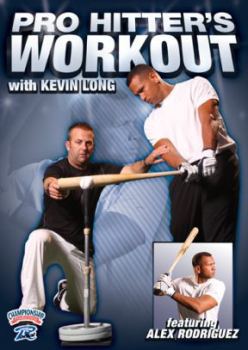
Alex Rodriguez
Supposedly Being Short to the Ball
As a result, they do what makes the most sense to get to that position as quickly and as directly as possible.
However, in truth good hitters rarely, if ever, look like that at the Point Of Contact.
At least not on their good swings.
Instead, the best hitters look like the pictures below.
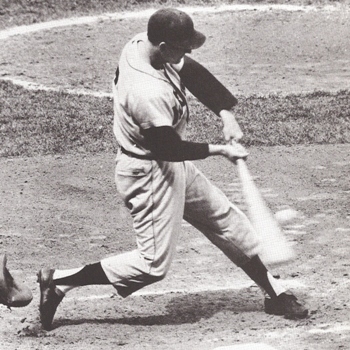
Al Kaline

Manny Ramirez
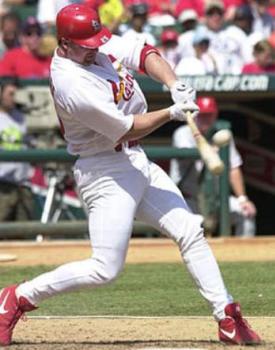
Mark McGwire

Andres Torres

Albert Pujols
Notice how, at the Point Of Contact, their back elbows are still bent 90 degrees and their hands are up, and in the plane of their shoulders, and not down at their front hips.
How to be Truly Short to the Ball
The pictures below show how a swing that is truly short to the ball is achieved.
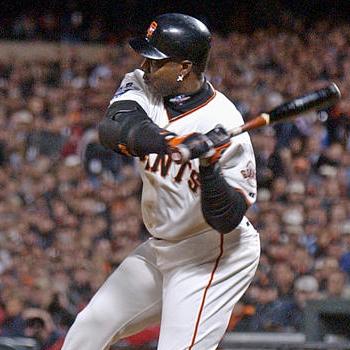
Barry Bonds
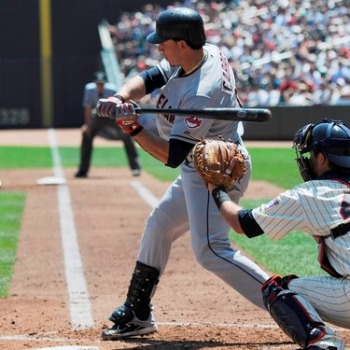
Asdrubal Cabrera
As in the case of the picture of David Freese that started off this piece...

David Freese
...notice how, in each case, their hands stay...
- Close to their back shoulder and maintaining Connection.
- Up and in a position of good Alignment.
- With the back elbow pinched and forming the Vertical V.
...up to and through the Point Of Contact.
Joe Mauer, David Freese, and Being Truly Short to the Ball
The picture below of Joe Mauer is another one that I frequently use when I talk about how good hitters are actually short to the ball.
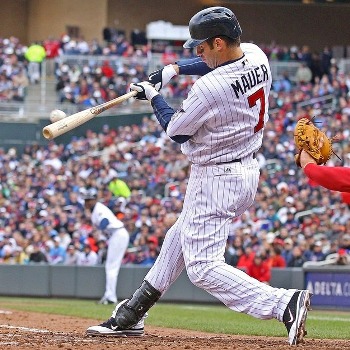
Joe Mauer
The thing to notice is how, at the Point of Contact...
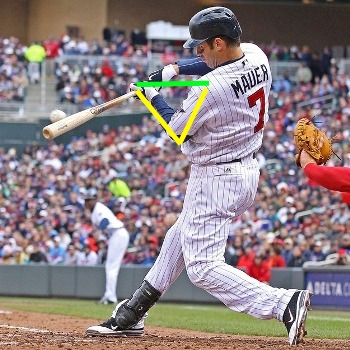
Joe Mauer
...Joe Mauer's back elbow is still bent significantly (the yellow line) and his hands are still in close proximity to his back shoulder (the green line).

David Freese
For those who would say that the picture of Joe Mauer shows a hitter at an atypical position, the picture above of David Freese that started off this piece shows the same basic thing, but a fraction of a second earlier (notice how you can see the ball in the right side of the frame).

David Freese
Being Truly Short to the Ball
There simply isn't time for Freese to do anything with his arms and hands other than let the barrel whip out into the path of the ball, which is what happens in the clip above of the same swing by David Freese.
How do you Adjust While Staying Short to the Ball?
While the swings above will work for pitches up in the strike zone, will they work for pitches down in the strike zone?
The answer is that they will due to the concept of Tilt.
Notice how, in a larger view of the picture of David Freese that started off this piece, it's obvious that his shoulders aren't level to the ground.

David Freese
Tilting
Instead, he is Tilting forward over the plate.
You can see Tilt even more clearly in the clip below of Andres Torres' home run to right field during the 2010 World Series.

Andres Torres
Tilting and Maintaining Alignment
Turning a Low Pitch into a High Pitch
Notice how, rather than dropping his hands to adjust to the height of the pitch, Andres tilts forward over the plate. That allows him to make the adjustment while keeping his hands up by his back shoulder and in a position of good Alignment.
That effectively turns a low pitch into a high pitch.
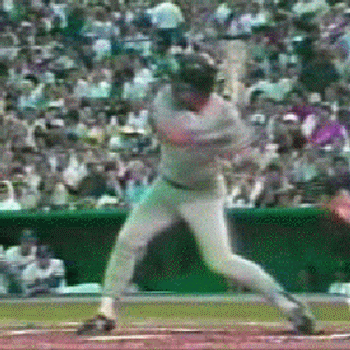
Don Mattingly's Swing
In the same way, notice how Don Mattingly adjusts by tilting forward over the plate in the clip above. Mattingly gets to almost the same exact position that David Freese does.

Don Mattingly
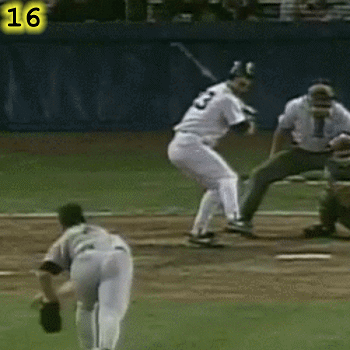
Don Mattingly
As I explain in my piece on The Secret of Don Mattingly's Swing, this was a characteristic part of Don Mattingly's swing the secret to being truly short to the ball.
Notes
[1] This picture of David Freese...

David Freese
Being Truly Short to the Ball
...is a great example of both Rotation and Connection because, rather than getting his hands to that position by throwing his hands at the ball, he has gotten his hands to that position by Rotating his hips and his shoulders while keeping his hands in the same position relative to this back shoulder. That means that David Freese is swinging with his entire body and not just with his arms, wrists, and/or hands.